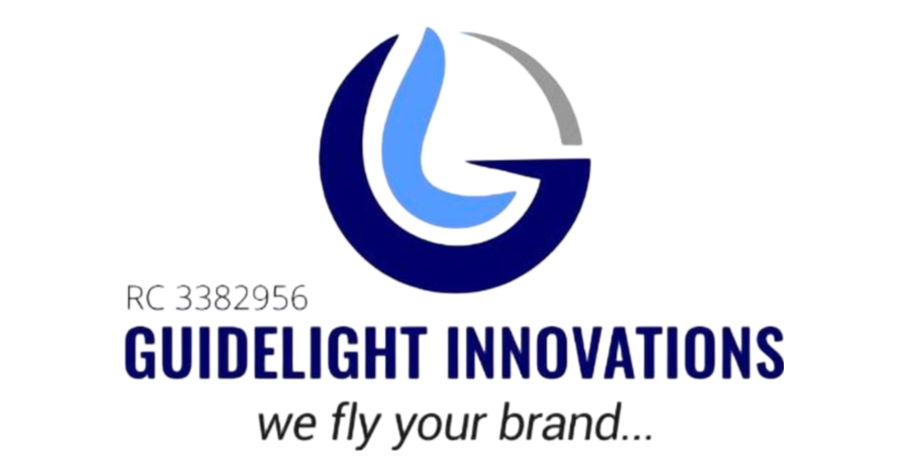In today’s hyper-competitive business landscape, growth isn’t just about working harder—it’s about working smarter through strategic collaboration. Agency partnerships have emerged as one of the most powerful catalysts for business expansion, with compelling data showing that companies with mature partnership programs grow revenue nearly twice as fast as those without them.
Whether you’re a startup looking to scale rapidly, an established business seeking new revenue streams, or an agency aiming to expand your service offerings, strategic partnerships can unlock opportunities that would be impossible to achieve alone. But what exactly makes agency partnerships so transformative, and how can your business leverage them for sustainable growth?
Understanding Agency Partnerships: More Than Just Collaboration
An agency partnership is a strategic business arrangement where two or more companies combine their strengths, resources, and expertise to create mutual value. Unlike simple vendor relationships or occasional collaborations, true agency partnerships involve deep integration, shared goals, and long-term commitment to each other’s success.
These partnerships can take many forms including white label arrangements where one agency provides services under another’s brand name, referral partnerships where agencies recommend each other’s services to clients, joint ventures where agencies collaborate on specific projects or campaigns, technology partnerships where agencies integrate their platforms and tools, and co-marketing initiatives where agencies promote each other to expand reach.
The key differentiator is that agency partnerships create synergies where the combined output exceeds what either party could achieve independently. It’s not just about adding capabilities—it’s about multiplying them.
The Compelling Numbers Behind Partnership Success
Before diving into how agency partnerships work, let’s examine the data that makes them impossible to ignore.
Revenue Growth That Speaks Volumes
Companies with mature partnership programs grow revenue nearly 2X faster than others. Partnership channel revenue growth rates for high-maturity companies outpace low-maturity companies by more than double. This isn’t marginal improvement—it’s transformational acceleration.
Partnerships contribute an average of 28% of overall company revenue for high-maturity companies, while low-maturity companies receive about 18% of their revenue from partnerships. For established businesses, nearly a third of total revenue flows through partnership channels, representing a massive revenue stream that would be difficult to replace through other means.
The affiliate marketing sector alone reached $18.5 billion globally in 2024, demonstrating the enormous scale of partnership-driven commerce. Agencies that understand how to harness partnership data are building revenue streams that rival traditional paid advertising channels.
Superior ROI Across Partnership Models
Approximately 97% of marketers report that account-based marketing partnerships deliver higher ROI compared to traditional marketing strategies. Companies implementing ABM strategies through partnerships have experienced a 208% increase in marketing-generated revenue over three years.
According to research by Awin and Forrester, affiliate-acquired customers have a 21% higher average order value and greater retention, supporting long-term growth. Brands blending influencer and affiliate efforts are seeing up to a 46% increase in affiliate-driven sales.
These numbers reveal that partnership marketing doesn’t just expand reach—it attracts higher-quality customers who spend more and stay longer.
The Cost Efficiency Advantage
Research found that bringing on a marketing agency can cost nearly 50% less than maintaining an equivalent in-house team, mainly by skipping salaries, benefits, and tool stacks. But only growth agencies combine that flexible model with experimentation and funnel ownership.
For businesses evaluating whether to build internal capabilities or partner with specialized agencies, the economics are clear. Partnerships provide access to world-class expertise at a fraction of the cost of hiring, training, and retaining full-time specialists.
Why Agency Partnerships Work: The Strategic Advantages
Understanding the numbers is one thing; understanding why these results occur is another. Let’s explore the fundamental advantages that make agency partnerships so effective.
Access to Specialized Expertise
No business can be excellent at everything. The pace of change in marketing, technology, and customer behavior means that maintaining cutting-edge expertise across all disciplines is virtually impossible for a single organization.
Agency partnerships solve this by allowing businesses to tap into specialized skills on demand. For example, a creative agency can partner with a technology firm to offer cutting-edge digital solutions like app development or AI-driven marketing strategies. This collaboration helps both agencies unlock new revenue streams and deliver exceptional client value.
A content marketing agency might partner with a data analytics firm, combining creative storytelling with quantitative insights that drive measurable results. Neither agency would need to develop the other’s core competencies—they simply leverage what already exists.
Rapid Market Expansion
Partnerships provide immediate access to new markets, customer segments, and geographic regions that would take years to develop independently. Rather than building brand awareness, establishing credibility, and acquiring customers from scratch in new markets, partnerships allow businesses to leverage their partner’s existing presence and reputation.
Consider a U.S.-based digital marketing agency partnering with a well-established agency in Latin America. Instantly, the U.S. agency gains access to Latin American clients, cultural insights, local market knowledge, and established business relationships that would have taken years to develop organically.
The Latin American partner, meanwhile, gains access to North American clients, advanced technology platforms, and international case studies that enhance their credibility in their home market.
Resource Optimization and Cost Reduction
Building comprehensive internal capabilities requires significant investment in talent acquisition, training, technology infrastructure, and ongoing professional development. Many businesses simply don’t have the resources to build world-class teams across all necessary disciplines.
Partnerships allow businesses to access these capabilities without the associated overhead. This is especially powerful for agencies, where client needs are diverse and unpredictable. Rather than maintaining full-time staff for every possible client requirement, agencies can partner with specialists who are activated only when needed.
Partnerships also allow agencies to convert fixed costs into variable costs. Instead of paying salaries regardless of client demand, partnership arrangements often involve revenue sharing or project-based compensation that scales with actual business volume.
Enhanced Credibility Through Association
The companies you partner with influence how potential clients perceive your business. Strategic partnerships with respected brands, established agencies, or technology leaders enhance your credibility through association.
When a small agency partners with a major platform like Google, Microsoft, or Shopify, they gain instant credibility with potential clients who trust these established brands. The partnership signals that the agency has been vetted, meets certain standards, and has access to resources and knowledge that independent agencies lack.
This credibility boost can be especially valuable for newer agencies or those entering competitive markets where trust and reputation are critical factors in client decision-making.
Risk Mitigation and Experimentation
Expanding services, entering new markets, or adopting new technologies always involves risk. What if clients don’t respond? What if the investment doesn’t pay off? What if internal teams can’t execute effectively?
Partnerships reduce these risks by allowing businesses to test new offerings with minimal upfront investment. Rather than hiring a full team to launch a new service line, businesses can partner with specialists to test market demand. If it works, the partnership can be expanded or capabilities can be built internally. If it doesn’t work, the business hasn’t committed significant resources to a failed experiment.
This ability to experiment with calculated risk is essential for innovation and adaptation in rapidly changing markets.
Types of Agency Partnerships: Choosing Your Model
Not all agency partnerships are created equal. Understanding the various partnership models helps businesses select the approach that best aligns with their goals and resources.
White Label Partnerships
Under this model, one agency provides services or products that another agency rebrands and sells as their own. The client only sees the partner agency’s brand, not the white label provider’s identity.
White label partnerships provide resellers with cost savings by eliminating the need to develop products or services from scratch, access to expertise by leveraging specialized skills without hiring full-time staff, brand expansion by offering more services under their own brand, scalability by adding new offerings without proportional cost increases, faster time-to-market by launching services immediately rather than building capabilities, enhanced client relationships by maintaining direct client contact and receiving credit for work, and reduced risk by partnering with proven solutions rather than developing unproven offerings.
For example, a branding agency without web development capabilities might partner with a white label web development firm. When clients need websites, the branding agency sells and manages the project, while the white label partner handles the actual development—all under the branding agency’s name.
Referral Partnerships
In referral partnerships, agencies recommend each other’s services to their clients, typically in exchange for referral fees or reciprocal referrals. This model works well when agencies serve similar clients but offer complementary rather than competing services.
A social media marketing agency might refer clients to an SEO agency when clients need search optimization services beyond the social agency’s expertise. In return, the SEO agency refers clients who need social media management. Both agencies expand their service ecosystems without building new capabilities.
Research shows that referrals consistently rank as the most valuable source of high-quality leads, with agencies experiencing substantial growth building robust referral programs and creating structured systems that incentivize and reward client referrals.
Joint Ventures and Co-Marketing
Joint ventures involve agencies collaborating on specific projects, campaigns, or initiatives where they share resources, responsibilities, and rewards. Co-marketing partnerships involve agencies promoting each other through shared marketing efforts.
These partnerships are typically project-based rather than ongoing arrangements. For example, two agencies might jointly bid on a large client project that neither could handle alone, combining their complementary skills to deliver a comprehensive solution.
Built on top of award-winning services, programs provide more exposure for agencies through agency directories, co-marketing opportunities, lead exchanges, and sales support training on products and services. Other co-marketing activities include webinars, podcasts, white papers, and events.
Technology and Platform Partnerships
Many software companies offer agency partnership programs that provide agencies with special resources, benefits, and incentives. In exchange, agencies implement the platform for clients, provide referrals, and expand the platform’s user base.
For example, Klaviyo provides email marketing and customer data software for over 100,000 direct-to-consumer brands through partner agencies. Shopify’s robust affiliate infrastructure focuses on ecosystem expansion through partner referrals, app integrations, and co-branded campaigns, allowing agencies to earn recurring revenue by onboarding clients or launching apps and themes.
These partnerships create win-win scenarios where agencies gain powerful resources and revenue streams while software companies expand their user base through amplified agency referrals.
Ecosystem and Alliance Partnerships
The most sophisticated partnership model involves creating ecosystems where multiple partners collaborate within a unified framework. Rather than one-to-one partnerships, ecosystem partnerships involve networks of complementary businesses working together to serve customers comprehensively.
With Partner Relationship Management systems, you can have ISV partners, distributors, resellers, agencies, and affiliates all working under the same tool. Additionally, you can house resources, access partner networks, and set up automated payouts and commissions. This streamlines reporting and payouts, allowing businesses to see what’s working and funnel their focus there.
Real-World Success Stories: Partnerships in Action
Understanding partnership models theoretically is valuable, but seeing them in action demonstrates their real-world impact.
Impact.com’s Partnership Platform Growth
Impact.com, the world’s leading partnership management platform, demonstrated remarkable growth driven by client and agency partner expansion. The company welcomed more than 1,000 new clients to its customer portfolio in 2024, including major brands like Big Lots, Gatorade, The Container Store, and Kühl.
The company increased gross merchandise value (sales derived from partner referrals) to over $100 billion annualized and increased gross transaction value (payments to partners) to over $4.5 billion annualized. These staggering numbers demonstrate the enormous scale of partnership-driven commerce in the modern economy.
Impact.com also surpassed over $200 million in annual recurring revenue for the first time, showing that the partnership management industry itself is thriving as more businesses recognize the value of strategic partnerships.
Samsung’s Black Friday Partnership Campaign
Samsung created a gamified Black Friday campaign where users navigated interactive challenges to unlock deals and discounts. The campaign engaged over 300,000 users and acquired approximately 200,000 new customers through agency partnership execution.
This case demonstrates how creative agencies partnering with technology platforms can create innovative experiences that drive measurable business results at scale.
Google Cloud’s AI Partner Initiative
In seeing the growing demand for AI capabilities, Google Cloud hasn’t lost sight that it is a partner-led business with a plan to double rewards for partners who drive adoption. To optimize speed of adoption, Google is also actively solving for the AI knowledge gap.
For example, the Google Workspace Sandbox Toolkit is a learning tool that offers Duet AI at no cost to partners so they can accelerate their knowledge and sales cycles. Google Cloud’s commitment to pushing partners toward AI has positioned its partner program as one of the most talked about in 2025.
This example shows how technology giants are recognizing that their growth depends on empowering agency partners with resources, training, and incentives to successfully sell and implement their solutions.
Kinsta’s Agency Partner Program
Kinsta, a premium managed hosting provider for WordPress, launched an Agency Partner Program specifically designed to help agencies grow their businesses through true collaboration, mutual support, and co-marketing.
“While agency partner programs aren’t new, what makes Kinsta’s program different is that we are focused on making solid connections with our agency partners to figure out how we can grow together,” said Daniel Harfouch, Kinsta’s head of partnerships.
The program provides exposure for agencies through Kinsta’s Agency Directory, co-marketing opportunities, lead exchanges, and sales support training. “Winners are always looking for an edge. Kinsta’s Agency Partner Program is that edge,” said Matt Sullivan, CEO of Torro Media. “It gives Torro Media the platform, support and credibility to scale without wasting time on stuff that doesn’t drive growth.”
Implementation: Building Successful Agency Partnerships
Understanding the value of partnerships is one thing; building them successfully is another. Here’s a comprehensive framework for creating partnerships that deliver results.
Step 1: Define Your Partnership Objectives
Before pursuing partnerships, clearly articulate what you want to achieve. Are you seeking to expand service offerings without hiring new staff, enter new geographic markets or customer segments, enhance credibility through association with established brands, generate new revenue streams through referral fees or revenue sharing, or access specialized technology or platforms?
Different objectives require different partnership approaches. Clarity about goals prevents wasted time pursuing partnerships that don’t align with strategic priorities.
Step 2: Identify Ideal Partner Profiles
Not every potential partner is a good fit. Develop a profile of your ideal partner based on complementary strengths where partners offer capabilities you lack and vice versa, shared values and business practices where cultural alignment prevents future conflicts, compatible client bases where you serve similar customers but offer different services, geographic or market presence where partners have strong positions in markets you want to enter, and proven track records where partners demonstrate success and reliability.
This profile becomes a filter for evaluating potential partnership opportunities, helping you focus on relationships with the highest potential for success.
Step 3: Research and Vet Potential Partners
Once you’ve identified potential partners, conduct thorough due diligence by reviewing their work portfolio and client testimonials, checking references from existing partners or clients, assessing their reputation within the industry, evaluating their financial stability and growth trajectory, and understanding their partnership philosophy and expectations.
This vetting process helps avoid partnerships with agencies that have fundamental incompatibilities or reliability issues that could damage your business or reputation.
Step 4: Structure the Partnership Clearly
Ambiguity kills partnerships. Successful collaborations require crystal-clear agreements covering roles and responsibilities defining exactly what each party will deliver, financial arrangements detailing how revenue, costs, and fees will be handled, communication protocols establishing how often partners will communicate and through what channels, client ownership clarifying who owns the client relationship and how transitions are managed, intellectual property specifying who owns work products and how they can be used, performance metrics determining how success will be measured and evaluated, and conflict resolution establishing mechanisms for addressing disagreements constructively.
Choose the right partnership model based on your business needs whether white label, referral agreements, or joint ventures to maximize collaboration and growth opportunities. Clearly define roles and communication channels from the start to ensure both agencies align on goals, responsibilities, and expectations, preventing confusion.
Step 5: Start Small and Scale Gradually
Rather than immediately committing to comprehensive partnerships, start with limited pilot projects that test compatibility and capabilities. A successful pilot builds trust and reveals potential issues before they become major problems.
If the pilot succeeds, gradually expand the scope, volume, and commitment of the partnership. This phased approach reduces risk and allows both parties to adjust as they learn how to work together effectively.
Step 6: Invest in Relationship Management
Partnerships require ongoing attention and cultivation. They don’t maintain themselves through initial enthusiasm alone. Successful partnerships involve regular communication through scheduled check-ins to discuss progress and challenges, transparent sharing of information about performance, challenges, and opportunities, collaborative problem-solving where both parties work together to address issues, continuous optimization where processes and agreements are refined based on experience, and celebration of wins where successes are acknowledged and appreciated.
Partnership maturity leaders have distinct priorities. They focus on improving partner onboarding, setting up meaningful metrics, and creating structured communication cadences that keep partnerships healthy and productive.
Step 7: Measure and Optimize Performance
What gets measured gets managed. Establish clear metrics for evaluating partnership performance including revenue generated through the partnership, quality and quantity of referrals exchanged, client satisfaction with partnered services, time and cost savings compared to alternatives, strategic goals achieved such as market entry or capability expansion, and partner satisfaction with the arrangement.
Using advanced analytics to track and optimize partner performance gives businesses a clear edge in identifying high-value collaborators, fine-tuning strategies, and maximizing ROI. Data-driven decision-making enables companies to stay agile and responsive to changes in the partnership landscape.
Common Partnership Pitfalls and How to Avoid Them
Even well-intentioned partnerships can fail if certain common mistakes aren’t avoided. Understanding these pitfalls helps businesses navigate partnerships successfully.
Misaligned Expectations
When partners have different assumptions about what the partnership will deliver, disappointment and conflict are inevitable. One partner might expect immediate results while the other sees the relationship as a long-term investment. One might expect equal effort while the other contributes minimally.
Solution: Be explicit about expectations from the beginning. Document assumptions about effort, timelines, deliverables, and outcomes. Revisit these expectations regularly to ensure ongoing alignment.
Lack of Communication
Partnerships require consistent communication to remain healthy. When communication lapses, small issues become major problems, misunderstandings multiply, and resentment builds.
Solution: Establish regular communication cadences—weekly, bi-weekly, or monthly depending on partnership intensity. Use these check-ins to share updates, surface concerns early, and maintain personal connection beyond transactional interactions.
Unclear Financial Arrangements
Money issues destroy partnerships faster than almost anything else. Ambiguity about who pays whom, when, and how much creates conflict and erodes trust.
Solution: Document financial arrangements in detail, including payment terms, revenue sharing percentages, fee structures, expense allocations, and invoicing procedures. Make sure both parties understand and agree before beginning work.
Poor Cultural Fit
Even when capabilities and market positioning align perfectly, partnerships can fail if organizational cultures clash. Different approaches to client service, quality standards, communication styles, or business ethics create friction that undermines collaboration.
Solution: Invest time in understanding partner culture before formalizing the relationship. Look beyond surface-level compatibility to deeper values and working styles. If fundamental cultural differences exist, consider whether the partnership is worth pursuing.
Lack of Flexibility
Sticking rigidly to one way of doing things can stifle growth and innovation. Markets change, client needs evolve, and partnerships must adapt or become obsolete.
Solution: Foster a culture of flexibility where both agencies can adapt to challenges and find creative solutions. Build adaptation mechanisms into partnership agreements so changes don’t require complete renegotiation.
Insufficient Commitment
Partnerships require investment of time, attention, and resources to succeed. When one or both parties treat the partnership as an afterthought, it underperforms or fails.
Solution: Be proactive in addressing challenges by setting clear goals, resolving conflicts early, and preparing an exit plan in case the partnership doesn’t meet expectations. Treat partnerships as strategic priorities requiring dedicated resources, not side projects.
2025 Partnership Trends: What’s Shaping the Future
As we move through 2025, several emerging trends are reshaping how agency partnerships operate and deliver value.
AI-Powered Partnership Management
Nearly 77% of growing marketing agencies now use AI tools in their daily operations, with this number expected to surge even higher over the next five years. AI is transforming partnership management through enhanced partner matching using machine learning to identify optimal partnership opportunities, performance prediction analyzing historical data to forecast partnership outcomes, automated workflow handling routine partnership tasks like reporting and communication, and personalization tailoring partnership experiences based on individual partner needs and preferences.
In 2025, expect enterprise partner programs to focus on offering a suite of AI solutions and enable those partners to effectively sell those solutions through a multitude of resources and incentives.
Ecosystem-Based Partnerships
The most sophisticated companies are moving beyond one-to-one partnerships toward ecosystem models where multiple partners collaborate within integrated frameworks. In 2025, expect more enterprise partner programs to utilize Partner Relationship Management systems to centralize their channels into revenue-generating ecosystems.
With a PRM, you can have ISV partners, distributors, resellers, agencies, and affiliates all working under the same tool. This streamlines reporting and payouts, allowing businesses to see what’s working and funnel their focus there.
Data-Driven Partnership Optimization
As partnerships become more complex, data-driven insights are critical for evaluating performance. Leveraging partner performance dashboards will allow businesses to access real-time, comprehensive views of key metrics like revenue contribution, pipeline impact, and partner engagement.
Predictive analytics will also play a critical role by enabling organizations to forecast potential outcomes based on historical trends, helping them allocate resources where they will yield the greatest returns.
Partnerships as Demand Generation
Partnerships are not just about co-marketing—they’re the backbone of demand generation. As businesses look to expand their market reach, tapping into partners’ audiences, co-creating content, and sharing leads have become essential strategies to drive brand awareness and revenue growth.
Aligning marketing strategies with partners will be crucial in planning. This ensures that both parties share a common understanding of target audiences, goals, and expected outcomes that will drive more effective joint campaigns.
Influencer and Affiliate Integration
Creator-driven affiliate revenues are projected to reach $1.3 billion by 2025, indicating substantial impact on the affiliate marketing space. Influencers and affiliate marketers were responsible for approximately 20% of U.S. eCommerce revenue on Cyber Monday 2024.
Brands blending influencer and affiliate efforts are seeing up to a 46% increase in affiliate-driven sales, demonstrating the power of integrating these partnership models.
The Agency Perspective: Partnerships for Service Expansion
For agencies specifically, partnerships offer unique advantages beyond what typical businesses experience. Let’s examine partnership benefits from the agency owner’s perspective.
Expanding Service Offerings Without Overhead
The most immediate benefit for agencies is the ability to offer comprehensive services without hiring for every specialty. A digital marketing agency might partner with a web development firm, a content writing service, a video production company, and a public relations agency—instantly creating a full-service offering without the overhead of maintaining all these capabilities in-house.
This allows agencies to compete for larger contracts and serve existing clients more comprehensively, reducing the risk of clients leaving to find agencies that can handle more of their needs.
Retainer Stability Through Comprehensive Services
Long-term retainers have become the preferred arrangement for most successful agency-client relationships in 2024. Retainers encourage deeper partnership and long-term thinking, provide resource optimization through consistent workloads, and indicate stronger client buy-in through longer contracts.
Interestingly, over half of agency clients now sign up for three or more services, indicating a clear preference for comprehensive partnerships rather than project-based relationships. By partnering to expand service offerings, agencies can capture more of each client’s marketing budget through bundled retainer arrangements.
Revenue Diversification
Partnerships create new revenue streams beyond traditional service fees through referral commissions earned by recommending partner services, white label markups on services provided by partners, revenue sharing on joint projects or campaigns, and platform commissions from technology partnership programs.
This revenue diversification reduces dependence on any single income source and creates more stable financial performance.
Geographic Expansion
For agencies looking to serve clients in new markets, partnerships with established local agencies provide instant market access without the need to establish physical offices, hire local teams, or build brand awareness from scratch.
A partnership approach to geographic expansion is faster, less expensive, and less risky than independent market entry.
Making the Partnership Decision: Is It Right for Your Business?
Despite the compelling benefits, partnerships aren’t universally appropriate. Certain situations make partnerships especially valuable.
Partnerships Make Sense When:
- You need capabilities you don’t have and can’t quickly build
- Client demand exceeds your current capacity
- You’re entering unfamiliar markets or customer segments
- You want to test new services without major upfront investment
- Your competitors offer more comprehensive services
- You’re spending excessive time and money on capabilities outside your core expertise
Partnerships May Not Be Necessary When:
- You have comprehensive capabilities across client needs
- You prefer maintaining complete control over all client touchpoints
- Your market is very narrow and specialized
- You have sufficient capacity and no growth constraints
- Client needs are extremely simple and don’t require diverse expertise
Most businesses, especially agencies, fall into the first category where partnerships offer clear strategic advantages.
Taking Action: Your Partnership Roadmap
Ready to explore agency partnerships for your business? Here’s a practical roadmap to get started.
Immediate Actions (This Week)
- Audit your current capabilities: List what you do well and where you have gaps
- Analyze client requests: Identify services clients ask for that you can’t provide
- Research potential partners: Create a list of 10-15 potential partnership candidates
- Join partnership networks: Sign up for relevant agency directories and partnership platforms
- Set partnership goals: Define specific outcomes you want partnerships to achieve
Short-Term Actions (This Month)
- Reach out to 5 potential partners: Start conversations to explore mutual interest
- Attend partnership events: Join webinars, summits, or networking events focused on partnerships
- Create partnership materials: Develop a one-page overview of what you offer partners
- Establish evaluation criteria: Define how you’ll assess whether partnerships are successful
- Pilot one partnership: Test the model with a single partner on a limited basis
Medium-Term Actions (This Quarter)
- Formalize successful partnerships: Create written agreements for pilot partnerships that worked
- Build partnership processes: Document how you’ll manage partnerships operationally
- Train your team: Ensure staff understands how to work with partners
- Measure partnership performance: Track metrics to evaluate ROI and effectiveness
- Expand gradually: Add 2-3 additional partnerships based on learnings from initial pilots
Long-Term Actions (This Year)
- Develop a partnership ecosystem: Move beyond individual partnerships toward an integrated network
- Invest in partnership technology: Consider Partner Relationship Management systems if volume justifies it
- Create partnership-focused roles: Assign dedicated resources to partnership management and development
- Optimize based on data: Refine your partnership approach based on performance data
- Position as a partner of choice: Build reputation as a valuable, reliable partner to attract opportunities
Conclusion: The Partnership Imperative
The data is unequivocal: companies with mature partnership programs grow revenue nearly twice as fast as those without them, generate significantly more revenue through partnership channels, achieve higher ROI across multiple metrics, and build more sustainable competitive advantages.
For agencies and businesses navigating the complexities of 2025’s marketplace, partnerships aren’t just nice-to-have collaborative arrangements—they’re strategic imperatives that separate thriving businesses from those merely surviving.
The agencies and businesses winning in today’s marketplace understand that excellence doesn’t require doing everything yourself. It requires knowing what you do exceptionally well, finding partners who excel at complementary capabilities, and creating collaborative ecosystems where the sum truly exceeds the parts.
The question isn’t whether your business should pursue agency partnerships. The question is how quickly you can identify the right partners, structure mutually beneficial arrangements, and begin capturing the growth opportunities that partnerships unlock.
Your competitors are already exploring these opportunities. The market is rewarding businesses that collaborate strategically. The partnership economy is expanding rapidly, creating unprecedented opportunities for businesses willing to embrace collaborative growth models.
The time to act is now. Begin with one partnership—a single test of the model with a carefully selected partner. Learn what works, refine your approach, and gradually build a partnership ecosystem that accelerates your growth trajectory.
The future belongs to businesses that recognize growth isn’t a solo journey—it’s a collaborative adventure where the right partnerships transform what’s possible.
Resources and External Links
Partnership Management Platforms
- impact.com – Leading partnership management platform
- PartnerStack – Partner relationship management solution
- Impartner – Comprehensive PRM system
- Partnerize – Partnership automation platform
Agency Partnership Programs
- Kinsta Agency Partner Program – Managed WordPress hosting partnership
- Shopify Partners – E-commerce platform partnership
- Google Cloud Partner Program – Cloud technology partnership
- Microsoft AI Cloud Partner Program – Enterprise cloud partnership
Partnership Research and Insights
- Forrester: Partnership Management Research – Industry analysis and trends
- Agency Partnerships Summit – Partnership-focused events and resources
- US Partnership Awards – Industry recognition and case studies
- impact.com Research: Partnership Maturity – Partnership effectiveness data
Agency Growth Resources
- Predictable Profits: Agency Benchmarks – Performance metrics and insights
- DesignRush: Agency Partnership Guide – Strategic partnership models
- Varos: Agency Performance Benchmarking – Real-time KPIs and comparisons
Partnership Education
- impact.com Partnerships Experience Academy – Free online training courses
- Digital Agency Network – Agency community and resources
Ready to accelerate your business growth through strategic partnerships? Start identifying potential partners today and begin building the collaborative ecosystem that will transform your business in 2025 and beyond.




